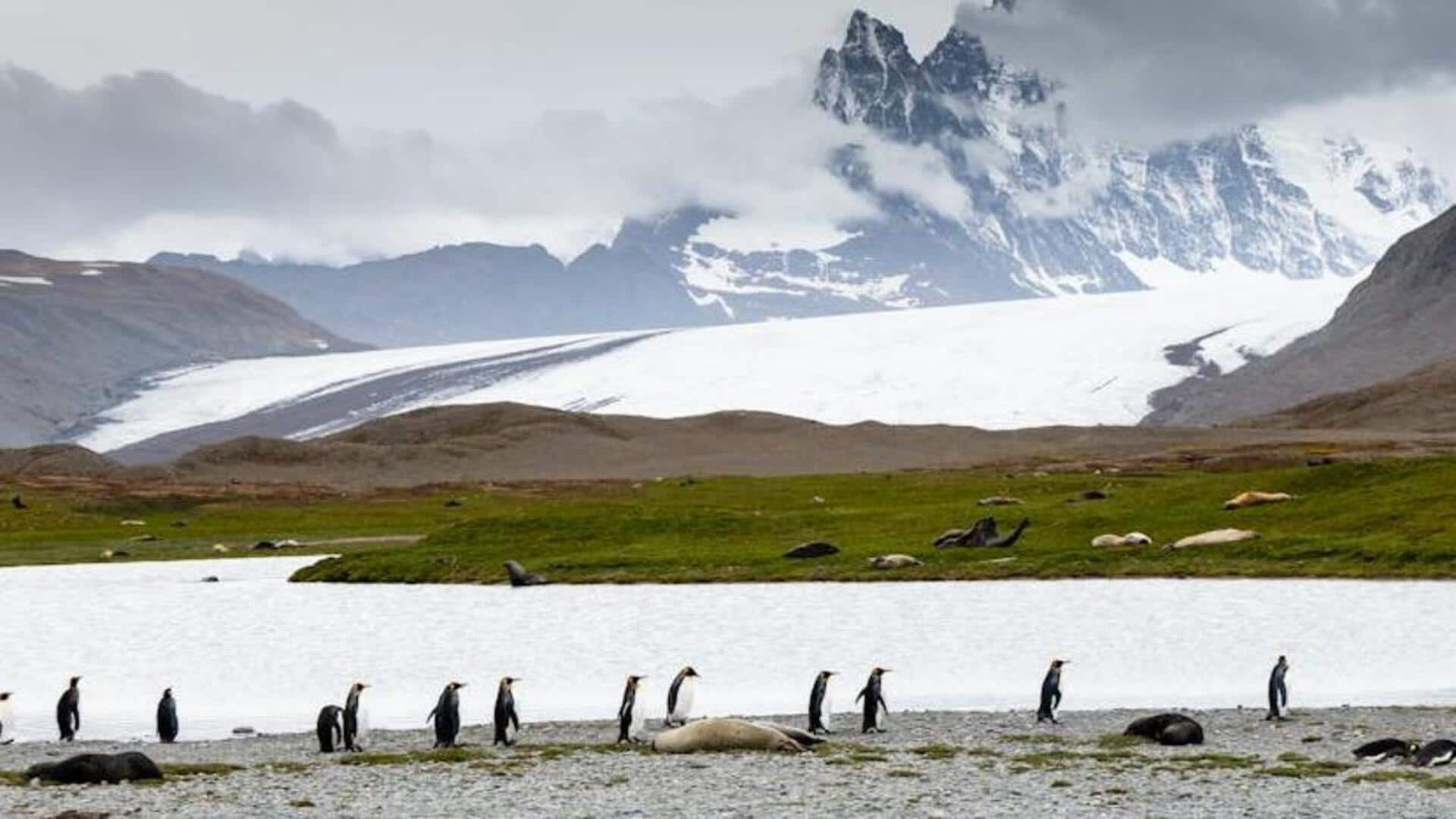
Journey to South Georgia Island: A haven for wildlife enthusiasts
What's the story
South Georgia Island, a remote and uninhabited gem in the southern Atlantic Ocean, offers an unparalleled adventure for those interested in wildlife, history, and pristine landscapes. Known for its rugged terrain, the island is a hotspot for researchers and adventurers alike. It features historic whaling stations and is home to abundant penguin colonies. This unique destination attracts visitors from around the globe.
History unveiled
Visit the abandoned whaling stations
The remnants of South Georgia's whaling past are scattered across the island, with Grytviken being the most accessible site. Here, visitors can explore the abandoned whaling station, learn about its history at the museum, and pay respects at Sir Ernest Shackleton's grave. This journey into the past provides insight into the harsh realities of early 20th-century Antarctic exploration and exploitation.
Wildlife encounter
Encounter diverse penguin colonies
South Georgia is home to one of the world's largest penguin populations. Sites like St. Andrews Bay and Salisbury Plain are bustling with king penguins by the thousands. Observing these majestic birds in their natural habitat is a mesmerizing experience. Visitors can witness their social behavior up close as they navigate life on this icy frontier.
Adventure awaits
Hike South Georgia's rugged trails
For those seeking adventure amidst breathtaking scenery, South Georgia's hiking trails offer just that. From short walks near Grytviken to challenging treks like Shackleton's route across the island, there is a path for every level of fitness and interest. These hikes provide stunning views of glaciers, mountains, and wildlife in an untouched landscape, making each step an unforgettable experience.
Protecting paradise
Conservation efforts on display
Understanding conservation on South Georgia Island is vital. The South Georgia Heritage Trust tirelessly works to protect its ecosystem. Visitors can learn about projects to remove invasive species and safeguard native wildlife at Grytviken Museum or by talking with researchers. This island is a sanctuary for fascinating wildlife, offering insights into nature's resilience and human endurance.